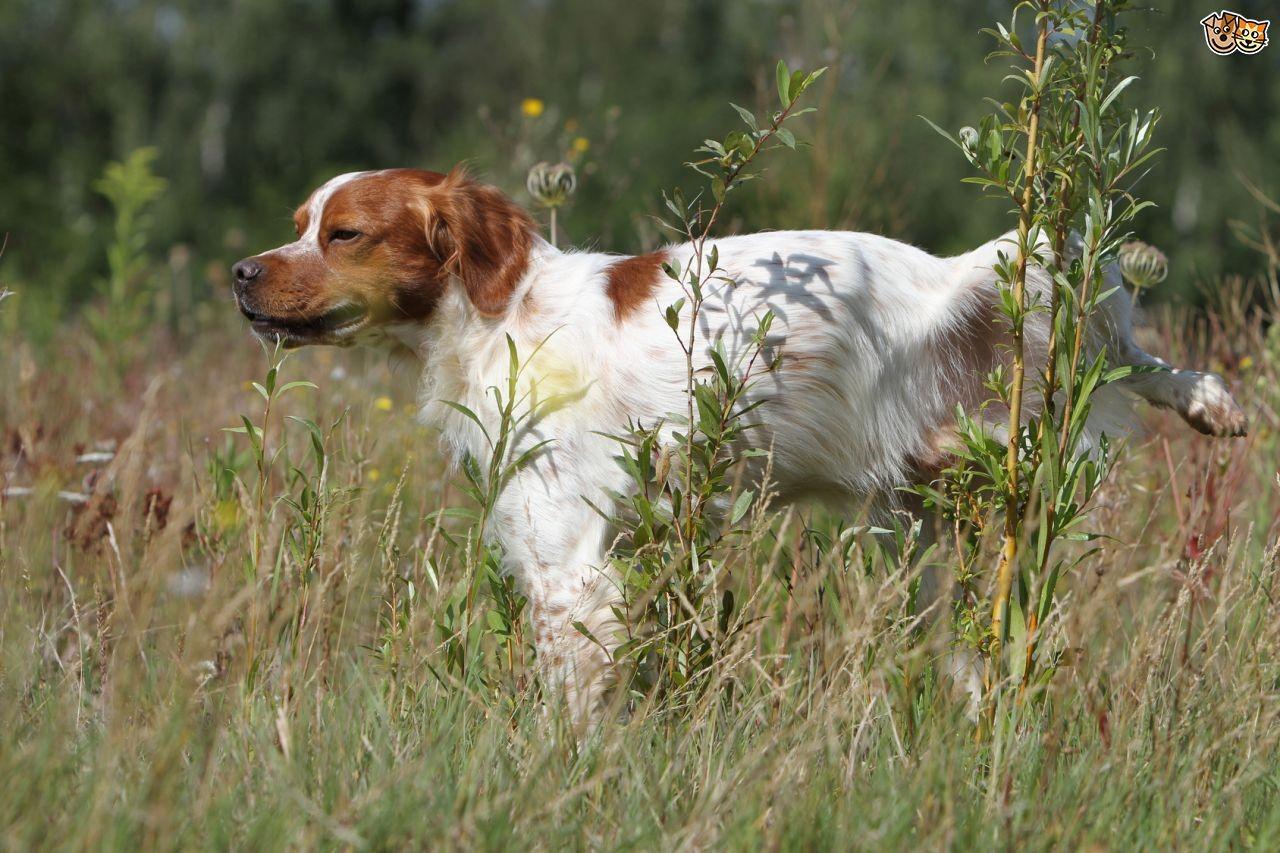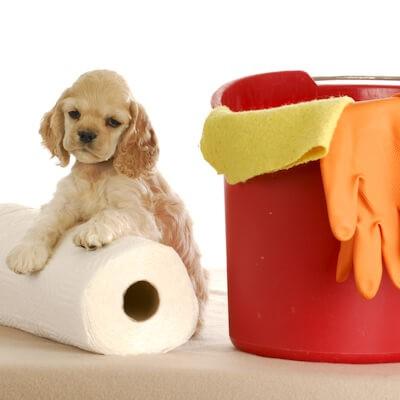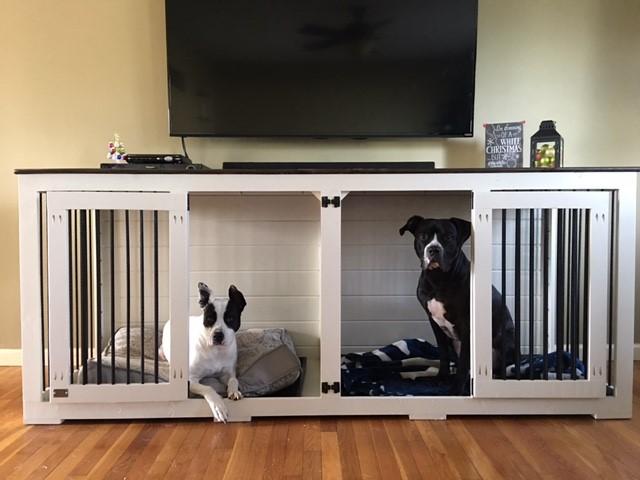




Dogs are generally clean animals and will usually choose to move away from their sleeping area in order to urinate and defecate.
However it is important that, when you bring a new dog into your home, one of the first training exercises you embark on is housetraining.
Even if you have been informed that your new dog is housetrained it is worth providing your dog with a refresher course, especially if he has spent a period of time in kennels.
By using reward-based training, you and your dog can work towards a positive relationship that will serve as a good foundation for future training.
However, it does require your time, patience and dedication.
The time it takes will depend on:
How consistently you keep the routine.
How quickly your dog is able to learn.
How old your dog is.
The experience your dog has had in the past.
As well as not being housetrained, there are many other reasons why a dog will go to the toilet in the house, such as stress caused by being left alone, not being let outside enough, ill health and marking their territory.

Under these circumstances it will be necessary to address the underlying problem as well as treating the symptom (i.e. the messing).
The following programme is designed for situations where the most likely cause of your dog wetting and/or messing in the house is a simple lack of housetraining.
1. When you begin housetraining your dog it is important to take him out frequently (this may be as often as every hour). This will reduce the chances of him messing inside and also provides him with more opportunities to learn about where it is appropriate to go to the toilet.
2. It is important to learn to predict when your dog will need to go to the toilet.
Dogs typically become fidgety, often sniffing around looking for a suitable location to go, begin to circle or squat, or appear distracted. Be particularly vigilant after naps, feeding, and periods when he has been left alone!
3. If you think your dog is looking as though he may need to go, encourage him outside.
4. Once your dog is outside, wait with him, encouraging him all the time. You can give a simple command such as “wee wee’s!”

It is essential that you go outside with your dog, as this is your opportunity to tell him that this is the correct place to go and reward him.
7. Don’t give your dog any food after 8.00pm. This will help him to hold himself until he is let outside in the morning. Make sure you get up early enough for him to be able to relieve himself.
The most important thing a dog needs is a set routine. Once he gets used to a routine he will feel confident he knows what to do and when.
5. Walk your dog around for a bit longer before going back inside. This will ensure that he does not learn that relieving himself ends his time outside. Therefore he shouldn’t hold on to the last minute in order to extend his playtime.

6. If after a few minutes your dog is showing no signs of relieving himself, take him back inside. At this stage you know that he is very likely to go in the near future. Supervise him regularly so that he does not get the chance to make a mistake. Once your dog does ask to go outside, repeat step 4. If he goes to the toilet, wait until he has finished, and then offer plenty of praise and reward.
Make sure that you remove any smells left by accidents by cleaning these areas with a solution of one part biological washing powder with four parts water, or a purpose made cleaner that is safe for pets.

This will take away any smells and stains. Make sure that you do not use cleaning products that contain ammonia, as this smells like urine to dogs, and will encourage them to use the same spot again and again.
When an accident happens don’t make a fuss – your dog has not done it on purpose. If he is still going in the wrong place, then it may be because you are not watching him carefully enough. If you can’t watch him he should be in his safe area. It is not fair to let him get it wrong.
If you tell your dog off when he has accidents you will only be bringing attention to them. He may even learn to go to the toilet inside but out of sight to try to avoid the telling off that usually follows. This can make it harder for him to go outside in the right places because he wont want to go in front of you anymore. Do take him outside as often as possible to give him the chance to toilet in the right place. Do not leave him unattended in his safe area for hours on end.
Make sure you let your dog outside as soon as you get up in the morning.
Some puppies may be too young to hold it for too long, as their bladders may be too small to cope. If this is the case, then you will need to take him out more often until he is a little older. You can also use puppy pads for very young puppies to help them get used to going in a specified place.

If a dog has diarrhoea or soft, runny poo and needs to go very often, then you may need to change his food, so that it becomes more solid. Ask your Vet for advice about this.
By rewarding your dog at the right time and ignoring mistakes, your dog will soon get the idea and be ‘accident’ free in no time at all.
A lot of people are put off crate training their dog because they believe that it is cruel to confine their dog. However, if a crate is used in the correct way it can be beneficial to both dog and owner.
The crate should be big enough for your dog to stand up in, turn around and stretch out when lying down. In the crate your dog should have soft bedding, a safe toy (such as a Kong or nylabone) and water.

The crate should be placed in the corner of a room away from any draughts or too much heat. Dogs are sociable by nature so the crate should be in a room that the family use a lot.
Initially the door of the crate should be left open at all times.
You will be able to leave your dog alone for a few hours without worrying that the dog will be destructive or mess in the house.
To encourage your dog to use the crate you should place toys and treats inside the crate or you can even feed him in the crate. When he feels comfortable he should then start to lie down in the crate.
Your dog will have a place of safety that he can retreat to when anxious or tired.
It may also help to house train your dog as dogs are reluctant to mess in their ‘den’.
After a few days of napping in the crate you can close the door of the crate for a few minutes but stay in the same room. Then release him from the crate and praise him.
The crate can also be used to safely transport your dog.
Gradually build up the amount of time he is shut inside the crate.
Once your dog is happy with this you can then shut him in and leave the room for a few minutes. You should gradually increase the amount of time that he is left for.
However you should not leave him in the crate for any more than three hours at a time. Make sure you don’t release him from the crate if he is barking, you should wait for him to be quiet and then release him or he will associate the door opening with him barking.
You should NEVER discipline a dog whilst in his crate, this is the dog’s special sanctuary and he should feel safe here.
Children need to respect that the crate is your dog’s special place and the dog should not be pestered when he is in there.
If housetraining problems aren’t solved by following this advice then your vet may need to check that your dog hasn’t got a medical condition that is causing the accidents.

